The death of the physical store has been greatly exaggerated. In fact, despite the growth of online-only giants, retailers with a brick-and-mortar presence still control between 94% and 97% of the market, according to Harvard Business Review. Half of the e-commerce pie is still squarely on their plates, and many are finding new ways to blend on and offline shopping, deploying technologies that mix and match experiences from both worlds. Below are six innovative displays that hint at how they might start slicing up the other half.
Bloomingdale’s Clothing To-Go WIndow
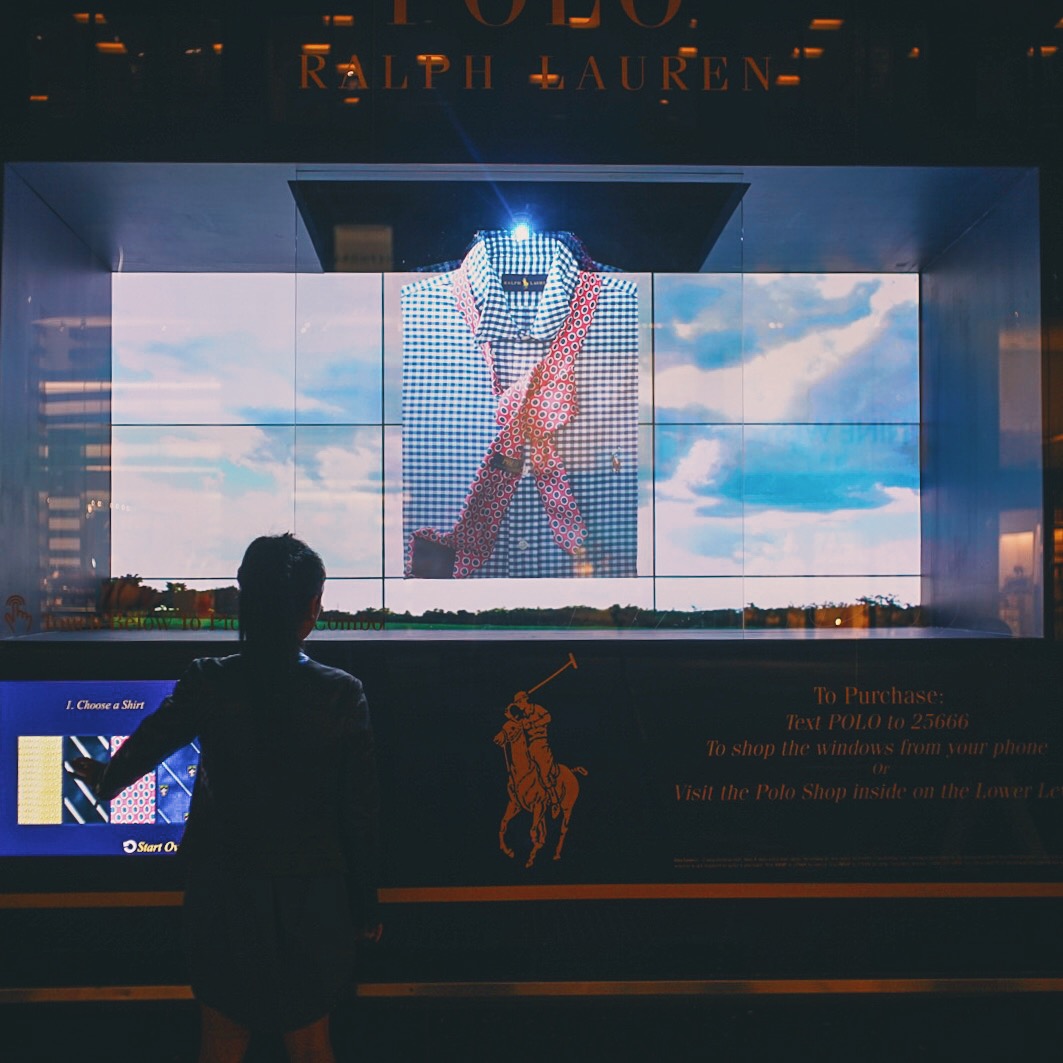
Bloomingdale’s Manhattan flagship store sought to convert passersby into paying customers this Father’s Day with six interactive window displays of Ralph Lauren clothing. Shoppers on-the-go could tap color swatches on a touchscreen facing the sidewalk. That same colored shirt, tie or pants would materialize behind the window. If they liked what they saw, they could text “POLO” for a link to a checkout page.
“We wanted to create an interactive experience that would literally make you stop in your tracks with something theatrical and mesmerizing,” said David Lauren, Ralph Lauren’s Executive Vice President of global advertising, marketing and corporate communications.
The experience also aimed to avoid slowing shoppers down — they could opt to have the clothing hand-delivered to the sidewalk, completing the entire impulse buy without ever setting foot in the store.
Rebecca Minkoff’s Interactive Dressing Room
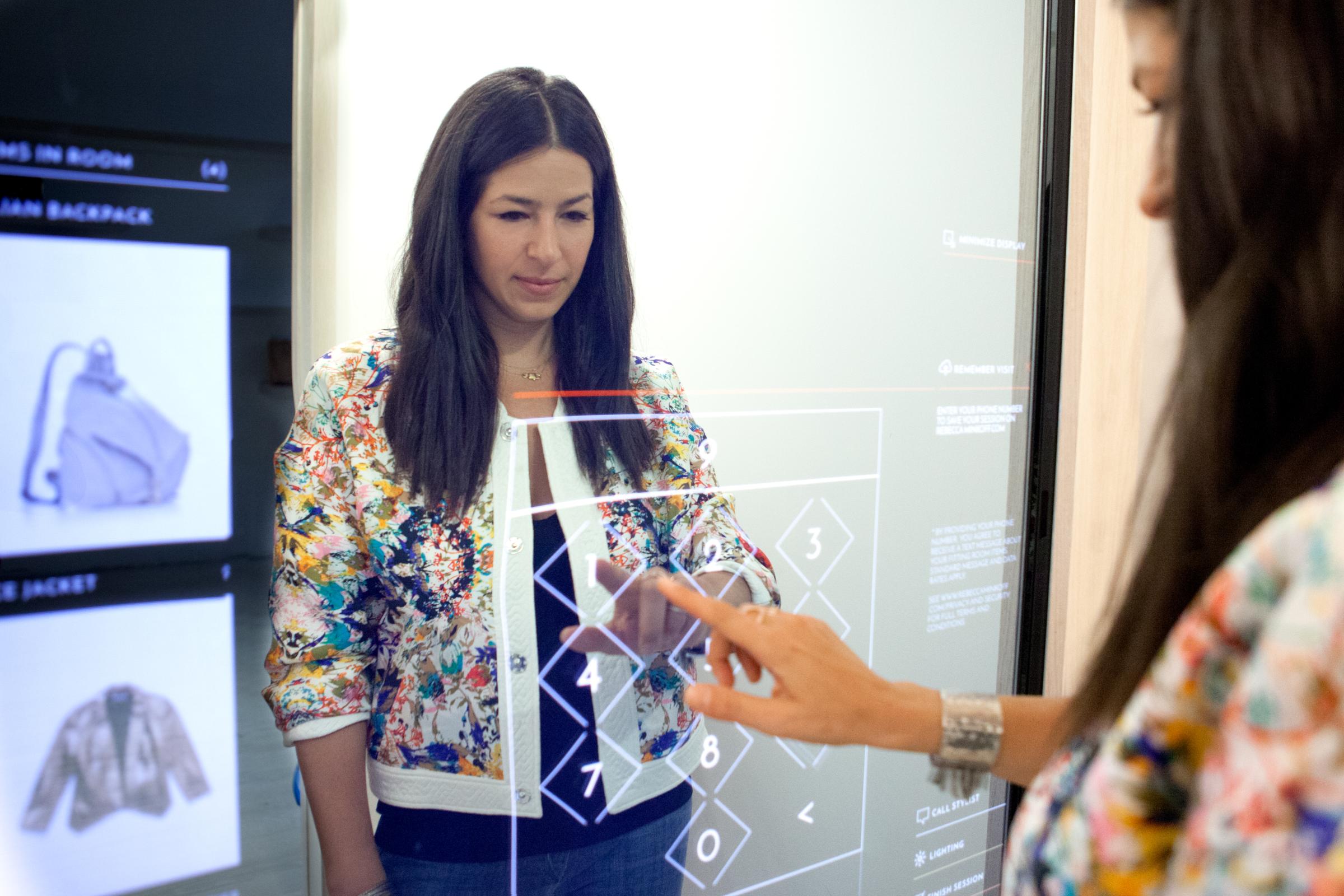
The mirror in the fitting room of Rebecca Minkoff’s SoHo store doubles as a personal shopping assistant, inviting shoppers to reflect (in every sense of the word) on which designer handbag suits their taste. A touchscreen display suggests alternative designs and colors. Shoppers can flip through their options, make a purchase or even adjust the mood lighting.
“You can come in here and be completely anonymous, or you can get VIP treatment,” Minkoff told TIME in an in-depth profile of the futuristic touchscreens. The mirrors are powered by inventory management software from eBay. Users can see precisely what the store has in stock, rather than ask an assistant to go rifling through inventory “in back.”
Samsung’s Virtual Fitting Room
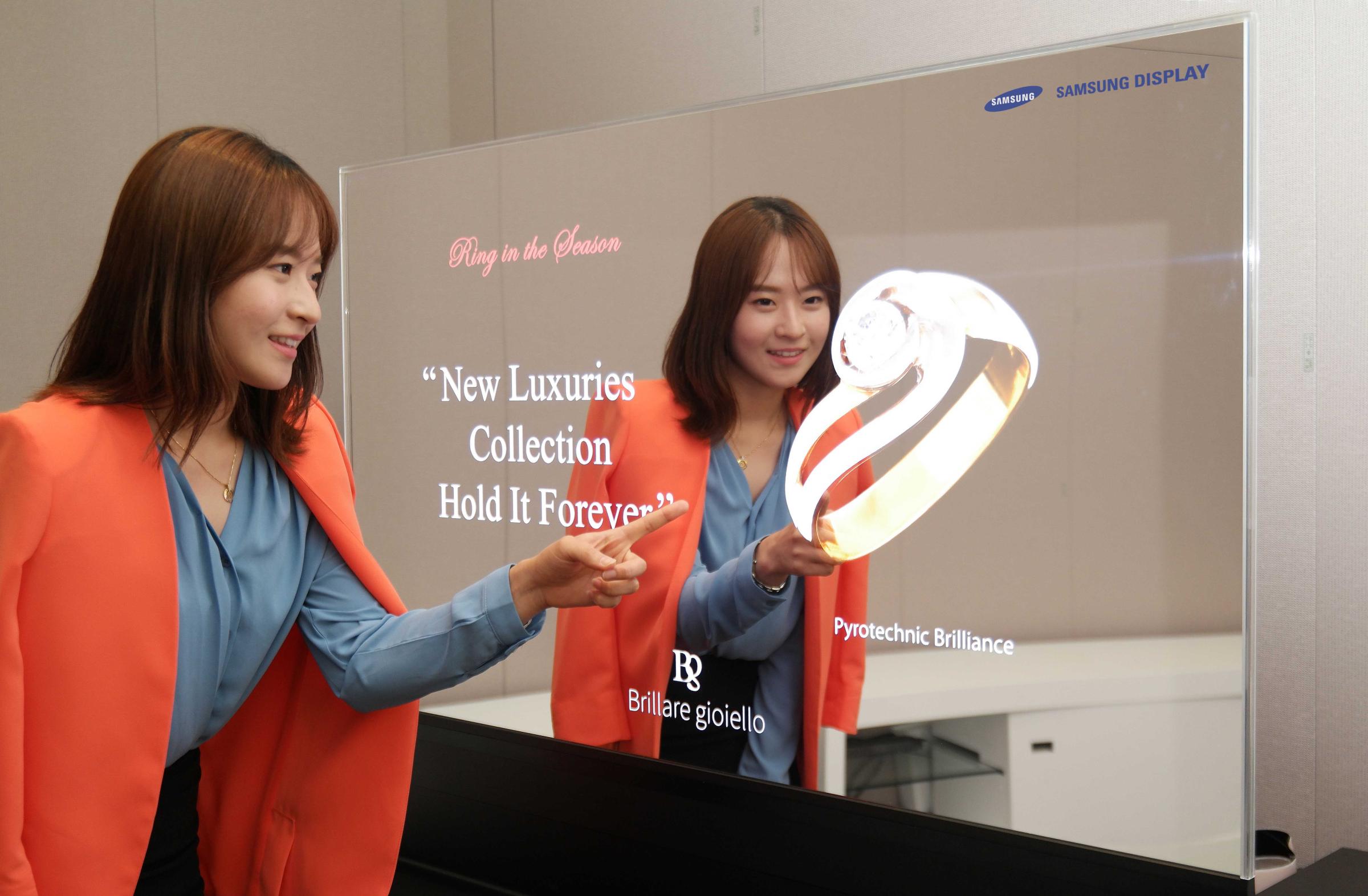
Korean electronics giant Samsung unveiled a 55-inch LED display earlier this month that can drape a virtual necklace over the user’s reflection, among other interactive tricks.
Retailers can then situate a “virtual fitting room” anywhere within a shopping center and lure customers into “trying on” jewelry and clothing without lifting a finger — well, maybe one finger to tap an item of interest. Three-dimensional cameras do the rest, mapping a floating image to the contours of shoppers’ bodies. Depth perception software developed by Intel helps secure the virtual item in place, “in order to deliver highly differentiated, exquisitely personalized customer experiences,” said Jose Avalos, worldwide visual retail director for Intel Corporation’s Internet of Things group.
Retail is just the staging ground for the technology. Samsung envisions its smart mirror as a potential replacement to the typical silvered-glass mirror at home, which got its last technological overhaul circa 1835.
EBay’s Uncanny Personal Assistants
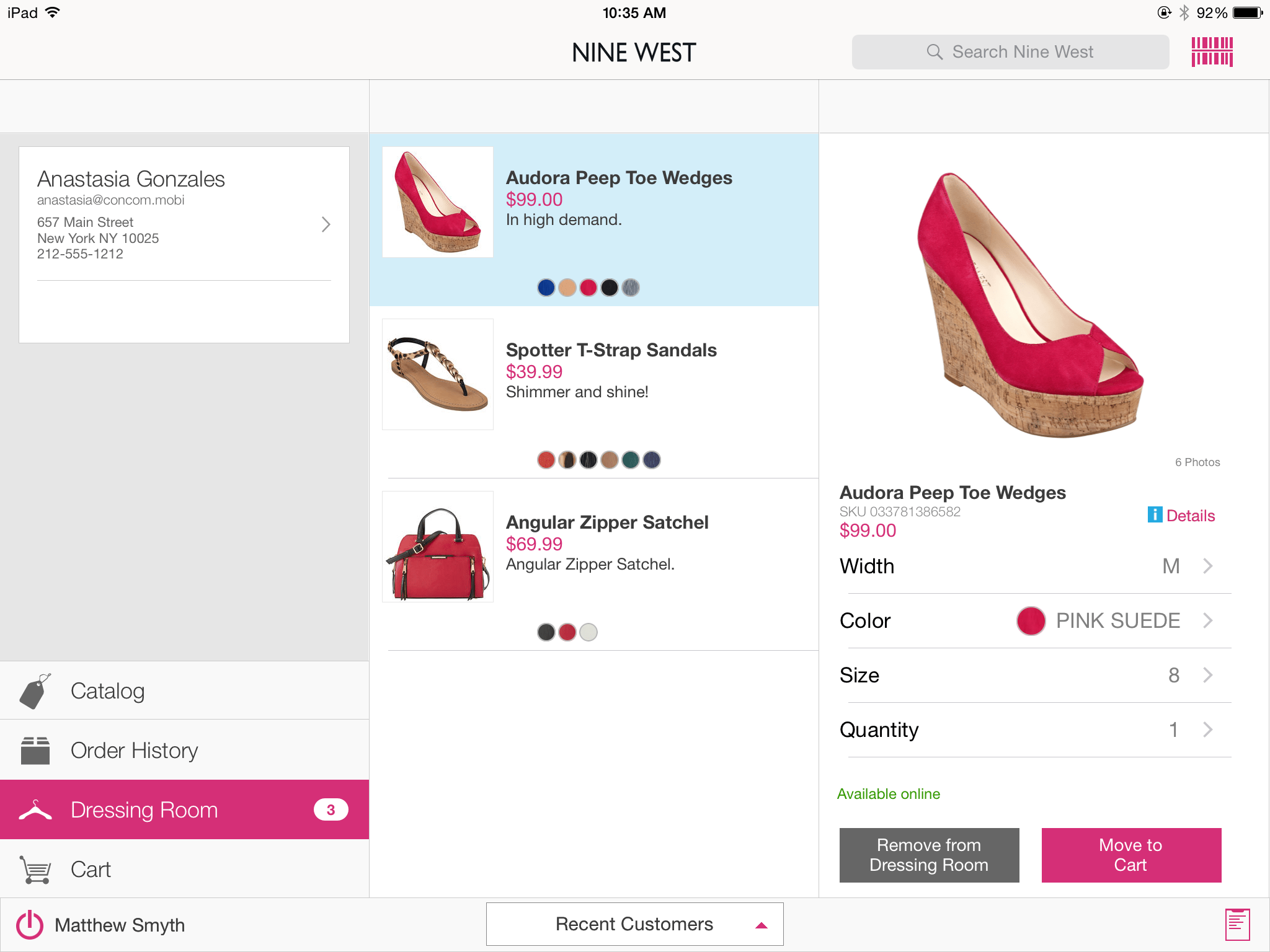
EBay has created an app called the Retail Associate Platform, which tracks a customer’s online shopping habits and arms retailers with an arsenal of personal information as soon as that customer walks through the door. As a result, sales assistants can have an uncannily personal conversation with shoppers, knowing, for instance, that they might be interested in a pink satchel that would perfectly match those new pink suede shoes.
“If a customer walks in and doesn’t buy, the retailer has no idea they even exist,” said David Geisinger, head of retail business strategy at eBay Enterprise. “With this new technology, retailers will be able to gather more detail that can help them understand the customer and compete in a crowded commerce landscape.”
Microsoft’s Immersive Screens
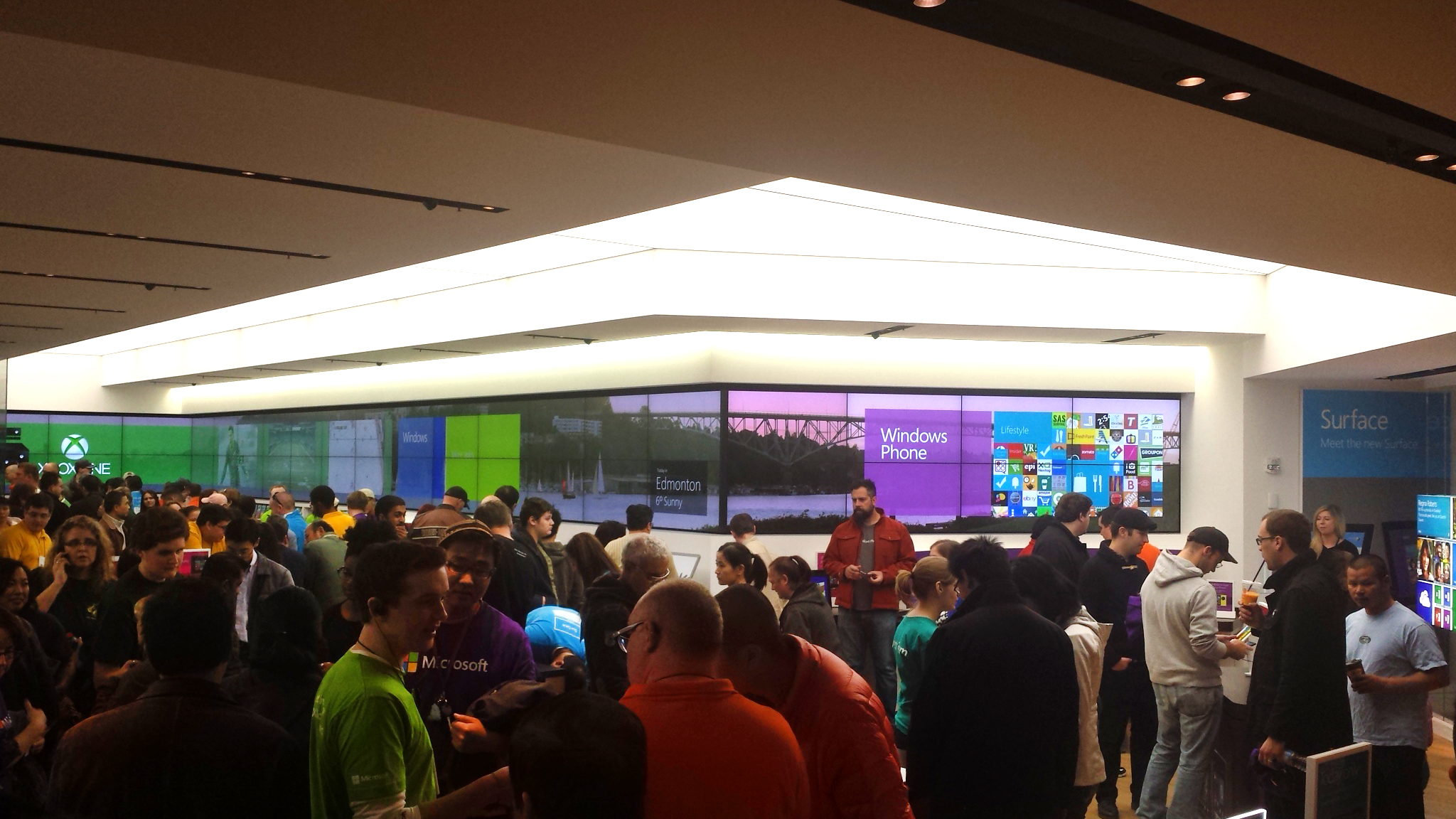
Microsoft has a natural edge when it comes to deploying high tech displays in its retail stores, but it set a particularly high bar with a strip of wall-mounted LCD displays that wrap around the space, end-to-end, and can display a runner zipping from screen to screen in a continuous loop around the store.
The display requires a specialized server that synchronizes the images as they play across the screens so the handoff appears seamless. The result is an eye-catching flow of information that’s as unmissable as a news ticker in Times Square.
“Not only does the digital wall display beautiful images and provide an inviting and immersive experience, it is used to communicate ideas about how technology can be used to accomplish tasks, announce new trainings and entertain customers and includes localized information such as weather and events” Florin Gale, creative director of Microsoft stores, told TIME. “We even invite customers to play Xbox One on video walls in store, which are surrounded in directional sound that immerses the players in the gaming experience.”
Angry Birds Shopping Experience
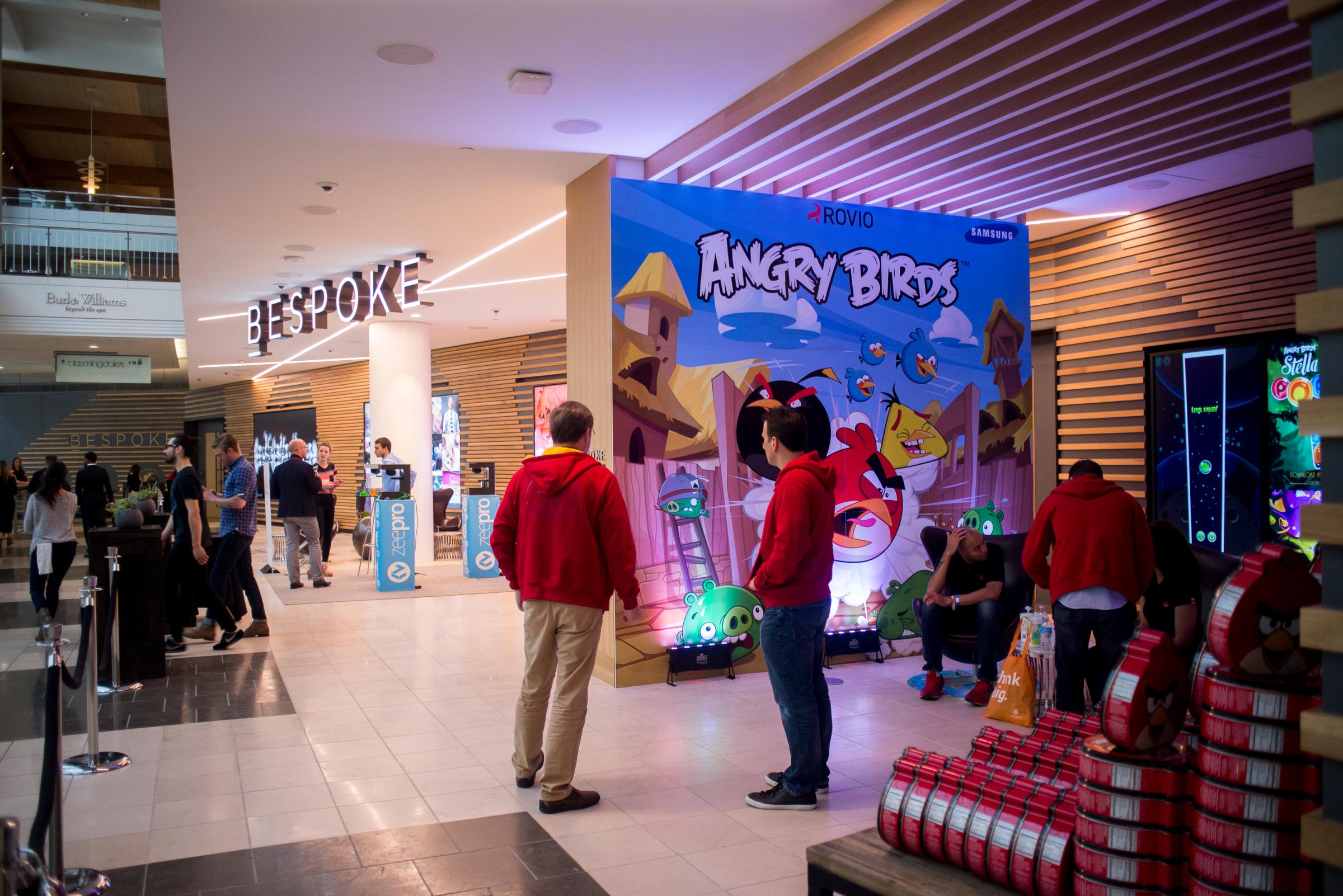
Westfield Corporation unveiled a real-world version of the smartphone game Angry Birds at its San Francisco shopping center last month, proving that as much as retailers long to go digital, companies locked in the digital world may also want a room of their own.
Game maker Rovio installed a gaming booth where shoppers could strap on Samsung Gear VR goggles and start slinging birds in three-dimensions. The booth was only an experimental display, one of many displays that Westfield Corporation set up for a showcase of innovative retail space uses. But it is perhaps the surest sign yet that the line between online and offline shopping could be relegated to a thing of the past.
More Must-Reads From TIME
- The 100 Most Influential People of 2024
- Coco Gauff Is Playing for Herself Now
- Scenes From Pro-Palestinian Encampments Across U.S. Universities
- 6 Compliments That Land Every Time
- If You're Dating Right Now , You're Brave: Column
- The AI That Could Heal a Divided Internet
- Fallout Is a Brilliant Model for the Future of Video Game Adaptations
- Want Weekly Recs on What to Watch, Read, and More? Sign Up for Worth Your Time
Contact us at letters@time.com